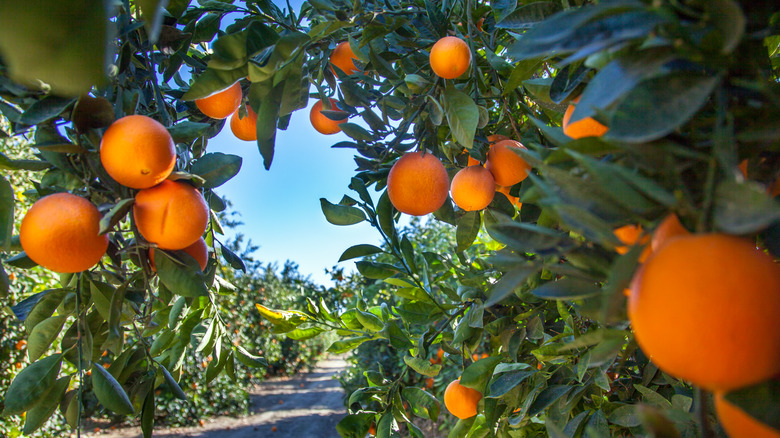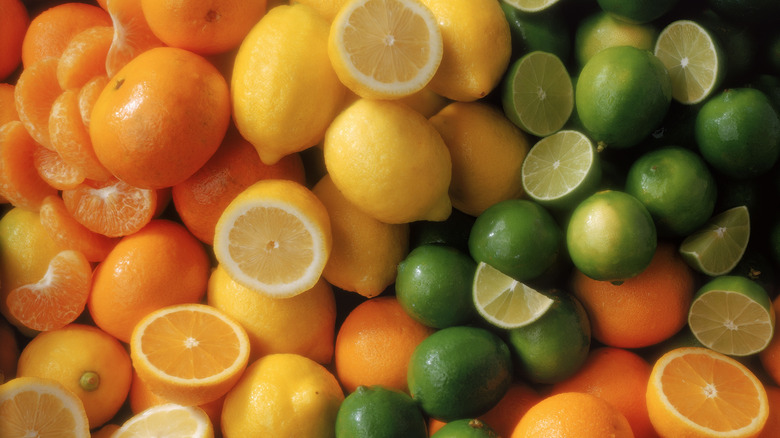California's Citrus Trees Are In Danger Of An Incurable Disease. Here's What We Know
In 2005, the Asian citrus psyllid, which is responsible for spreading harmful bacteria that causes an incurable, devastating disease in citrus trees, was found in Florida. Since then, Florida's orange production has dropped from 242 million boxes (per Statista) to an estimated 44.5 million in 2022 (per the USDA). The spread of this disease, called citrus greening or Huanglongbing (HLB), per the USDA, has cost the industry billions of dollars and thousands of jobs, according to the University of Florida's Florida Museum. Now, California growers have concerns that the pest may impede their production as well (via Food & Wine).
Citrus greening is caused by psyllids spreading bacteria while feeding on citrus trees. The bacteria inhibits the tree's ability to absorb the nutrients it needs to survive. As a result, it produces fewer fruits — and those that are produced are smaller and more bitter, rendering them unusable, according to The Washington Post.
Psyllids were first detected in California citrus trees more than a decade ago, but the concern about them spreading is mounting. Researchers and experts in California have been working for years to develop potential solutions to stop the spread of citrus greening, anticipating its spread across the country (per Food & Wine). The destructive pest's spread is a looming threat to the $7 billion orange industry.
How can citrus greening be treated?
Though the Asian citrus psyllid has not been found in commercial groves in California, it has been detected in residential growers' trees (per Food & Wine). To prevent the pest from spreading further, organizations including Florida Citrus Mutual and the Citrus Pest and Disease Prevention Division at the California Department of Food and Agriculture have engaged in outreach to communities, encouraging residents to report possible infestations and to follow guidelines to stop the spread. The USDA has recommended several things that residents in communities affected by citrus greening can do to help, including abiding by quarantine areas and not transporting fruit or plants outside of affected areas. The organization also suggests residents check local websites for area-specific guidelines.
Meanwhile, there is hope that treatment for the disease is on the horizon. In 2021, the University of California, Riverside reported that researchers have isolated a peptide found in Australian finger limes that can potentially be injected into, or sprayed onto, an affected plant. Initial studies have had positive results, and researchers reported that the treatment not only kills the bacteria but also stimulates citrus plants' immune systems to prevent infection.
The University of California, Riverside stated that in 2021, research had moved from greenhouses to field testing in Florida. In 2022, the research expanded to even more trees in the state, explains Citrus Industry. However, while the university has a licensing agreement with Invaio, it remains unclear when the treatment will become available to growers.

